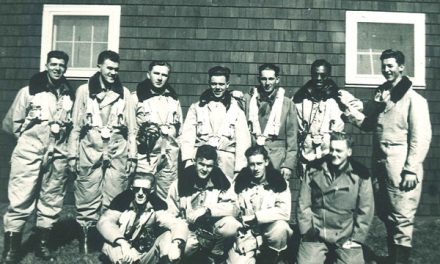
Photo by Parks Canada
Peter Mallett, Staff Writer ~
High in the mountains of Rogers Pass members of the Canadian Armed Forces were having a blast over the holiday season, but not from opening presents or spending time with loved ones.
Instead, 17 members of CFB Shilo’s First Regiment Royal Canadian Horse Artillery (1RCHA) spent Christmas 2017 and New Year’s Eve high in the Selkirk Mountains of B.C.’s southern interior.
There they set their sights at predetermined targets with their C3 105-mm Howitzer artillery guns as part of the annual avalanche control program in Rogers Pass.
The CAF, under Operation Palaci, partner with Parks Canada to keep the 40-kilometre stretch of the Trans-Canada highway corridor safe and free from lengthy avalanche closures throughout the winter. The roadway is B.C.’s main link to the rest of Canada, and even a short closure can inflict great economic losses as the flow of goods, services and people screech to a halt.
Rogers Pass is a notorious slide zone. In 1910, it was the site of an infamous avalanche that killed 62 railroad workers. The section of highway through the area passes 134 different avalanche paths.
The region experiences an annual snowfall accumulation of approximately 12 metres, so the objective is to create mini slides in an effort to avoid massive buildups of snow and ice that result in more destructive, road-closing slides.
Each year from November to April, in an effort to keep the traffic corridor open and safe, members of Royal Canadian Horse Artillery regiments fire away with C3 105-mm Howitzer artillery guns from 17 shooting areas, at 271 predetermined targets covering 134 slide zones.
“The soldiers in Palaci must be ready to go within a minute’s notice, 24 hours a day, seven days a week,” says Captain Charles Meyers, Joint Task Force Pacific (JTFP). “For them, there is no vacation and there is no Christmas holiday.”
Capt Meyers knows from first-hand experience that being deployed in Palaci and away from family for an extended period isn’t easy. He’s an artillery officer and took part in the military component of Palaci back 2009 as a troop commander of 1RCHA.
Today he’s the man in charge of planning and co-ordinating the CAF’s components of Palaci, and coordinating the agreement and memorandum of understanding between the CAF and government partner Parks Canada.
Parks Canada staff closely monitor weather conditions, snowfall and snow pack to assess avalanche hazards, and forecast when avalanche control is needed.
“It’s a great partnership and a great relationship,” says Capt Meyers. “We work together as a team to make sure the highway stays open.”
Palaci commenced in 1961 and is not only the longest running domestic military operation in our nation’s history, it is also the world’s largest mobile artillery avalanche control program. Capt Meyers says that although using old-fashioned firepower seems archaic, it remains the method of choice for a number of reasons.
“There is no avalanche control program that we are aware, capable of doing what Operation Palaci does. Up in Rogers Pass the weather conditions can be very nasty and some options available for avalanche control may not be as reliable. Using artillery is the way to do it because the Federal Government is committed to keeping the roadway open.”
He adds that other methods such as dropping explosives onto their targets from helicopters is often impossible due to poor visibility caused by heavy snow and winds, which can gust as high as 174 km/h.
Another method, known as Gazex, uses propane to trigger concussive blasts of compressed air to set off avalanches. This system is used effectively by the Province of B.C. in Kootenay Pass. Parks Canada has incorporated Remote Avalanche Control System technology in the pass to support the avalanche control program. Positioned to target nearby slide paths, explosives from the Remote Avalanche Control System can be detonated remotely.
The weather conditions can also greatly impact artillery operations. Keeping the firing locations and the giant concrete rings that allow the guns to rotate free from snow and ice is an ongoing issue. Slip and fall injuries by soldiers loading shells into the guns is a major occupational health and safety concern, so great care is taken to ensure the zones are safe.
Since salt cannot be used on the rings because of its corrosive properties the ice must be chipped away by hand with ice scrapers.
“The first few times when you are called to hit a target it’s exciting, but the thrill wears off quickly, the conditions you are working under are not pleasant,” says Capt Meyers.
He attends the site multiple times each year and he still marvels at the brute force of an avalanche, recalling one he witnessed at a close but safe distance away in 2009.
“I could hear the huge slide rumble down the mountain and hear the trees being uprooted, and could even smell the scent of pine in the air,” he says. “But the slide happened in the middle of the night in pitch darkness, and even though I couldn’t see it I could still hear and feel its great power.”
—–
Parks Canada is introducing new avalanche mitigation initiatives in its joint effort with the Canadian Armed Forces to keep the Trans-Canada Highway corridor at Rogers Pass free from crippling slides.
The new measures come after the federal government agency’s March 2016 announcement of a $3 billion investment over five years to support infrastructure work to heritage, visitor, waterway, and highway assets located within national historic sites, national parks and marine conservation areas across the country.
Improvements include:
- The installation of snow nets at an avalanche problem spot, Cougar Corner, to reduce the risk of avalanches reaching the highway.
- Remotely Activated Avalanche Control Systems (RACS) at several slide paths that intersect the Trans-Canada Highway.
- Column repairs and LED lighting inside Rogers Pass snow sheds that help cover one stretch of the highway from slides.
- Additional vehicle holding areas on the Trans-Canada Highway for use during snow closures.












